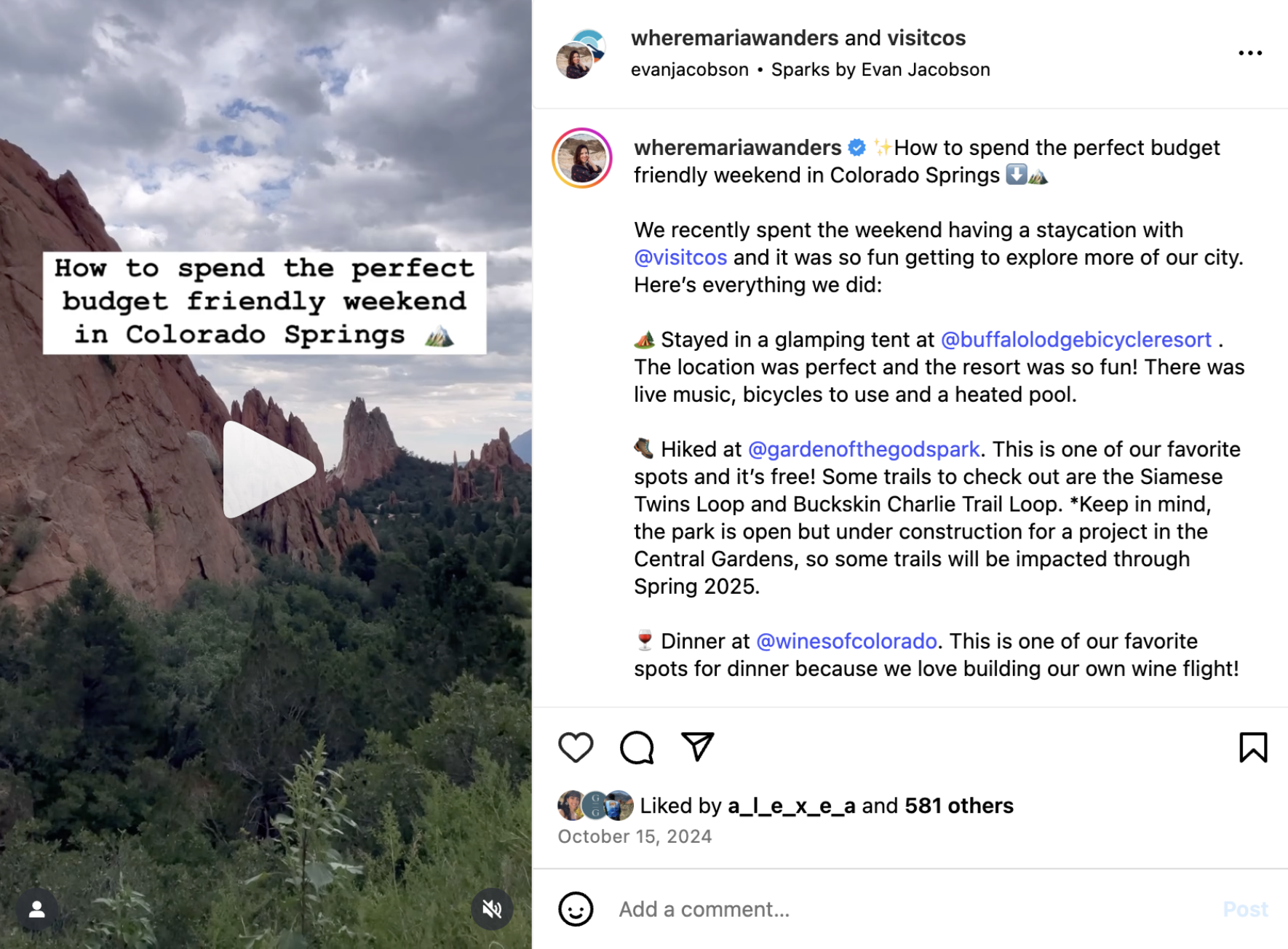
Get savvy to level up your influencer relations without breaking your budget.
I remember the summer of 2015 like it was yesterday. I was sitting at my desk in the bullpen at the PR agency where I worked. Influencer marketing was in its infancy. Little did I know, just a few years later I’d be starting the agency’s first influencer program.
Fast forward to 2020. I had just landed my new gig at Visit Colorado Springs. At that time, influencers were just starting to create media kits with standard rates, but many were still open to trade agreements in lieu of payment. Today, in 2025, it’s a whole new ballgame. Content creation is no longer a side hustle – it can be a lucrative career.
For small-to-medium DMOs that have a limited budget, and many (like mine) with no agency support, it can be intimidating to build strong influencer relations. But it’s certainly possible. Here are some strategies that may help.

1. Prioritize micro and nano influencers who will incorporate trade elements alongside their content fees. Back in the day, follower count and clout seemed like the end-all, be-all. Nowadays, most are aware that more niche influencers drive stronger ROI. They can reach more specific audiences that are more likely to act. Bonus points – they generally have lower rates.
2. Develop a few strategic pillars each year that your collaborations will fall under. Without an agency, my communications team (myself and one other teammate) are inundated with influencer requests every day. With our strategic pillars, it’s easier to say no to requests that don’t align with our current goals and focus on what our destination truly needs to accomplish in a given year. Examples include “wheelchair accessible adventures,” “affordable family trips,” and “off-season winter experiences.”
3. Shift budget more toward influencers than media. We used to have one media budget that we had to fit influencer collaborations within. Several years ago, we split that budget into two, allocating 3x more toward influencers than media. Influencers tend to be more costly due to content fees, whereas most journalists typically can’t accept money. Oftentimes, journalists’ publications pay for their travel costs.

4. Lean on partners. In all our influencer agreements, we involve our partners. Our partners are typically willing to offer media rates or in-kind experiences, lodging and meals. We frequently work with the airport and airlines to support travel costs for influencers. We also work closely with our state destination organization and collaborate with them on media and influencer visits, which significantly drives down our costs.
5. Hone the art of negotiation. Negotiation is key for savvy influencer relations. Always ask to see a media kit that outlines standard pricing and accommodations being sought. Have boundaries and stick to them. Be willing to cut down on travel costs, such as providing a stipend toward a rental car or meals (rather than covering them in full) and not covering flights. Be clear and specific in your media agreement and itinerary. Outline exactly what content will be provided, who will be tagged, what analytics will be shared in exchange for the content feel, travel costs, activities, lodging, stipends, etc. In the itinerary, make it as easy as possible for the creator by providing descriptions, account handles and tags, suggested messaging, etc.
The more support and strategy you bring to your influencer relations, the easier it is for the creator to do what they do best…create valuable content that moves the needle for your destination.

Submit Your Thought Leadership

Share your thought leadership with the Destinations International team! Learn how to submit a case study, blog or other piece of content to DI.


